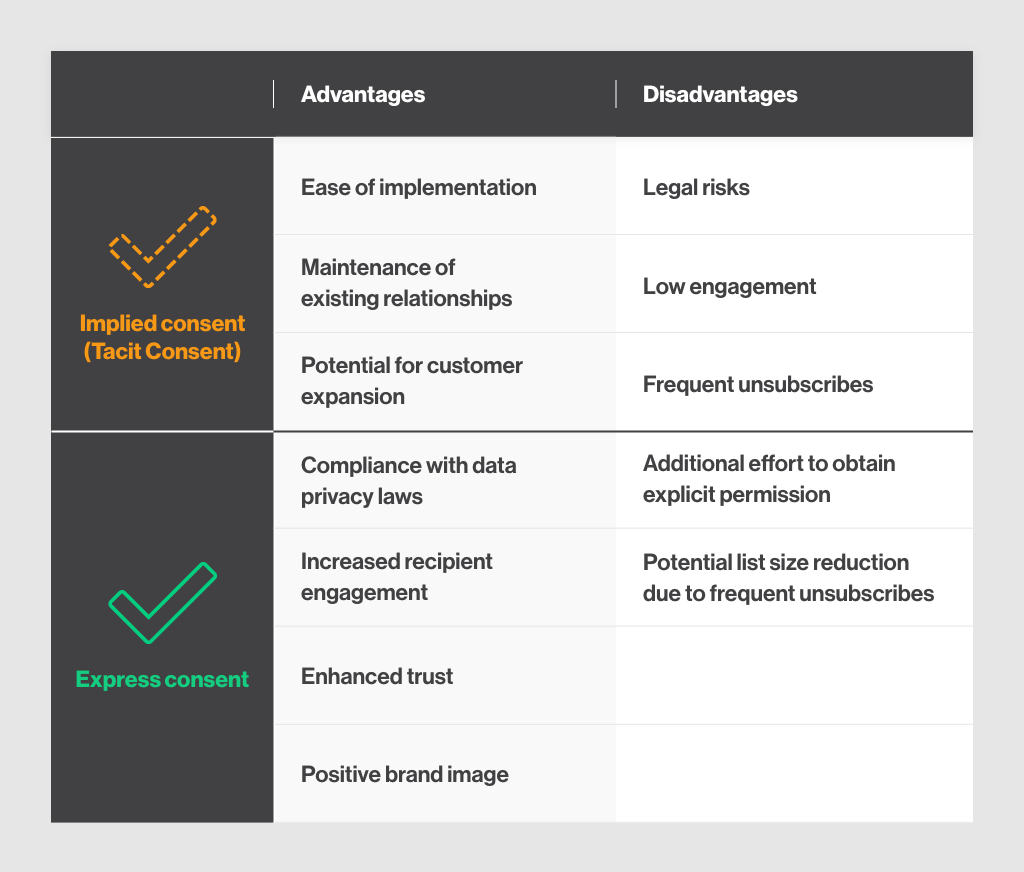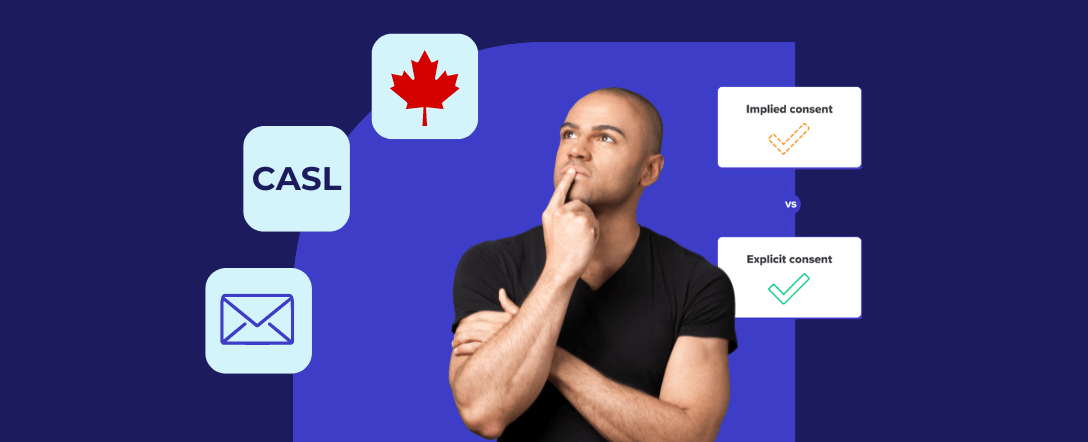Last update: June 20, 2024
Doing email marketing without the right platform is like parking where there’s a fluorescent yellow no parking sign. You saw the sign, you knew the restrictions, but then said, “It’ll only take 5 minutes, I’ll be fine.” Only to come back to find an expensive little piece of paper on your windshield…
You should have known better. That’s what happens with the Canadian Anti-Spam Legislation, also known as CASL. If you are a business owner, and you use email marketing to communicate with your clients, you could be that person standing outside in the cold contesting an infraction with nothing to stand on. As a Canadian business owner it’s your responsibility to know if you are operating within the parameters of the law.
More importantly if you are using an American based email marketing platform, you probably think you’re safe, but you could very well be at risk of not being in compliance with the law. Because the Canadian, and American anti-spam laws have different rules.
Key differences between the US and Canadian Anti-Spam Laws
The main difference is that the American Anti-Spam law has adopted an opt-out model, while Canada has adopted an opt-in model.
Under an opt-out model, businesses can send promotional emails unless the recipient states otherwise, or “opts out” of receiving them with the famous unsubscribe link.
Under an opt-in model, the recipient must affirmatively give the business permission to send promotions, newsletters etc.
Yes, the opt-in model makes it a little harder to build a mailing list, but not impossible. It gives your audience the autonomy to choose what they (truly) want to sign up for, possibly leading to a more engaged and quality mailing list. You won’t be wasting your time sending emails only to have the unsubscribe link clicked.
Before building your mailing list, the first thing you must do is understand the difference between the two types of consent.
Express consent
The express consent is when someone gave you their consent to send them promotional emails verbally, or in writing. If they agree verbally it’s always recommended to follow-up with an email confirming the consent. If they register online it is recommended to use the double opt-in.
The double opt-in means that once they register, they will receive a confirmation email asking them to confirm their consent. This narrows down your key audience and prevents people from using another person’s email address. The beauty of the express consent is that it doesn’t expire, unless the recipient withdraws their consent.
Implied Consent
Implied consent can come in many different shapes and sizes. The key thing to remember here is that implied consents have an expiration date. They can come from:
- Existing business relationships or personal relationships
- They have made a purchase or entered into a contract with you (24 months after the purchase or end of contract)
- They’ve inquired about your product or asked for a quote (6 months only)
- They gave you their business card at an event;
- Their email address is publicly posted within your network or industry (on their website, for example). If people publish their address or give it to you, you are allowed to contact them if your message is pertinent, and relates to the recipients functions or activities within that particular business.
Your ultimate goal is to have all implied consents move over to the express consent column as quickly as possible. A good Canadian email marketing platform will allow you to do just that. It will also allow you to document each and every consent, and offer the very important double opt-in.

How to do email marketing and stay compliant
Now that you know what is CASL and the essentials to continue to use email to grow your business, you must now put it into action. Here are a few tips on growing your contact list while following the rules.
Use sign-up forms
To grow your list, you need people to opt-in, so create sign-up forms on your website, your email signature, link them to social media… You can even use a QR code on your business card or at an event booth to make it accessible for people you network with. You can also use a pop-up form.
A pop-up form is a contextual window that appears automatically on a web page. It’s up to you to choose the fields you want to include in the pop-up form. You set up different triggers of it, such as by monitoring time spent on the page, observing user behaviour, or tracking mouse movement.
Offer exclusive content and lead magnets
Lead magnets are a great tool to grow your audience. Short videos (tutorials and guides) and text-based lead magnets are the highest converting lead magnets according to this 2023 study.
Like your email content, the lead generation strategy should be relevant to your audience. Those incentives might be the first contact people will have with your brand. Therefore, they should reflect the quality of your brand, product or services.
Learn more ways to grow your email list on our YouTube channel
Why you should NOT buy email lists
Premade lists are among the worse things you can do to your email strategy. They might bring a sense of security, but they focus on quantity and not quality. Furthermore, you have absolutely no way of knowing if they were acquired in compliance with the law; that means you don’t know if the people on the list have given their consent to be on that list.
Buying email lists is a low ROI investment that can lead you to legal issues, low converting contacts, and a lot of headache along the way.
Instead, work toward building your own mailing list with contacts that care about your business.
